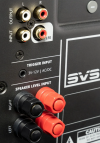- Thread Starter
- #61
If I follow the link it shows me the total amount of tested devices in each category, but can't enter to a list of models nor brands to see what's exactly there. AM I doing something wrong?How about you make a list from what whose been reviewed and measured hire and elsewhere instead? For that you use index - speakers and in table use price as a key and score as the reference. Then read the review and take a look at measurements for those you chose.

Master Audio Review Index
www.audiosciencereview.com
Good point.Take an eye that they are 86 or more dB sensitive as that amplifier isn't exactly a powerhouse and you do need it to have headroom and not to be pushed to hard.
I don't remember having seen any to buy, but will take a second look.You didn't say anything about those Pioneer SP-BS22-LR's and you won't find anything tonally as good for even twice their price from pasive one's that are wide available and relatively easy to get.
Spain! Well, Catalonia in real, but let's say Spain.I guess you are from Germany and if so plenty of shops and good offering along with second hand market. Of course take it easy and try to enjoy it.
If nor you nor @Chrispy say anything against any of the one mentioned in the list I asume it is because there isn't any of the speakers you know to deserved being kick off of the list. Must I keep thinking this? haha

